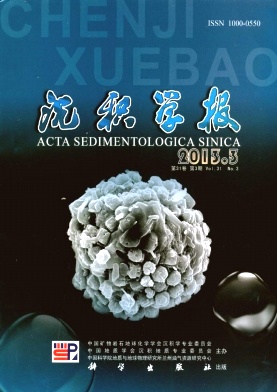Origin of the Ferriferous Ooids in the Benxi Formation at the Qiligou Section, Taiyuan Xishan
- Publish Date: 2013-06-10
-
Key words:
- &ldquo /
- Shanxi type&rdquo /
- iron deposits /
- ooids /
- microbial origin
Abstract: The “Shangxitype” iron deposits are wellknown for their wide distribution on North China platform. The origins of the deposits including their mineralization processes and the mineral sources, together with their ages, were once concerned by many geologists. Although the geological problems seem clear, the microbial activity is documented to have influence on the formation of the iron deposits just as the Xuanlong iron deposits. The iron deposits outcropped well in Taiyuan Xishan favors our study, and the ferriferous oolites developped in the iron layer of the Benxi Formation at the Qiligou section became our main study object. Through field observation, thin section examination and analysis of Energy spectrum, the composition and texture of the ferriferous oolites are studied in detail. The oolites are matrixsupported, with 45% of ooids and a few other grains (3%) such as bauxite debris and biotic fragments(shell,etc.) floating in clay minerals. The ooids are wellsorted with the sizes mainly ranging from 0.5 mm to 1 mm in diameter. In the thin section, most of the ooids are round, and some rombic and ovalshaped. The cortical layers of the ooids are mainly composed by micritic hematites, whereas the nuclei consist of micritic hematites or clay minerals, which indicate certain common origin between some nuclei and the matrix. Most of the ooids are characterized by radial structure with 2 or 3 obscure concentric layers, which indicate that the ooids probably formed in a relative stable condition, coinciding with the previous conclusion that the iron deposits formed in the restricted lagoon environment. Additionally, abundant intertwined cyanobacteria filaments are found to aggregate around and envelop most of the ooids and the distribution of ferriferous material (micritic hematites) in the matrix is closely related to these filaments. Spherical cyanobacteria which are interlaid in the intertwined filaments are also recognized under SEM. At the same time, ferriferous clots and pellets are identified in the cortical layers and even the nuclei of the ooids, and the notched margins of some ooids are probably related to microbial activity. All of these characteristics suggest that the microbial activity plays a significant role in the formation of the ferriferous ooids. The microbes are thus proposed to be involved in the formation of the iron deposits which formed in the relative stable lagoon environment.
| Citation: | Origin of the Ferriferous Ooids in the Benxi Formation at the Qiligou Section, Taiyuan Xishan[J]. Acta Sedimentologica Sinica, 2013, 31(3): 396-403. |






 DownLoad:
DownLoad: